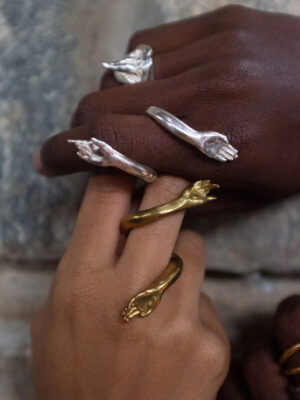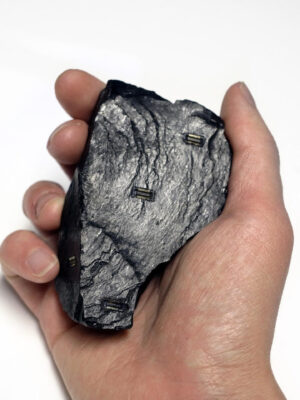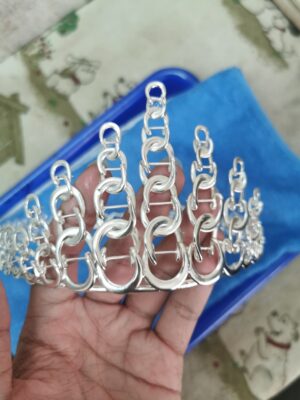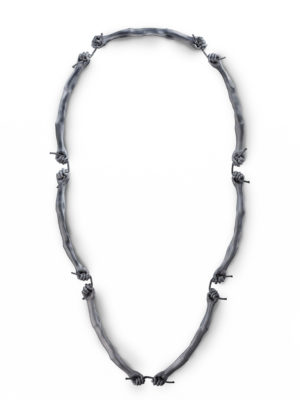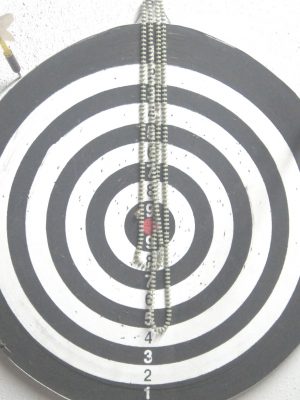CO: Your work seems to occupy a few different spaces.
There Is very conceptual work that deals with jewellery in a totally intangible way- the Gold Stain necklace, which is actually a t-shirt, and the Stone Baked rolling pin that leaves the imprint of a jewel on the dough while you’re working it.
With the more wearable pieces, you also play with layering pop culture references onto them, in a way, using jewellery as a platform for humorous or political conversation.
Where do you see your aspirations in these two avenues or ways of working?
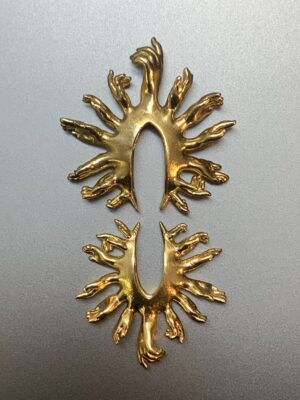
CO: With the more conceptual work of Stone Baked, you describe the opportunity of experiencing “jewellery away from the body”- can you speak a bit more about that and what about that is significant for you?
CO: On your website you discuss the place of jewellery in Indian culture, and how elements of the traditional attitudes toward jewellery don’t necessarily resonate with you. How has the format of jewellery allowed you to find other ways to relate?
Is it especially suited to express the specifics of your own experiences of cultural identity; to provide a medium for the kind of messages you want to send or conversations you want to have?
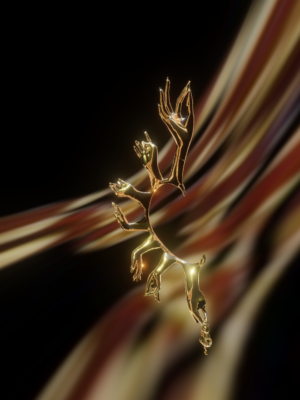

CO: What has your experience been like so far, working together with Crucible?
Is there work you are most looking forward to doing together with them in the future, or something else you are working on at the moment?
